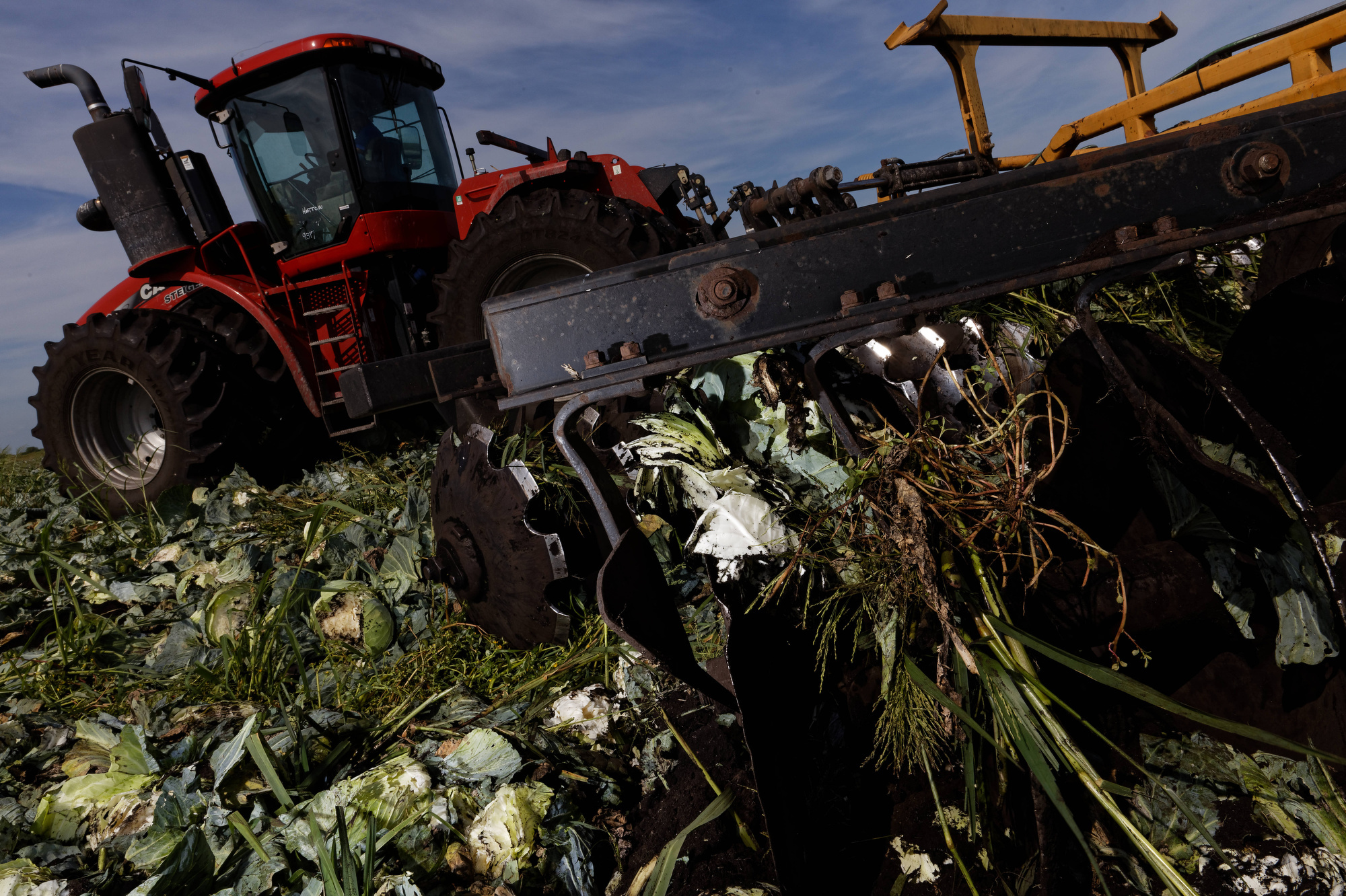
The precipitous drop in demand left many growers with no choice but to trash excess food or leave it in the fields because the cost of picking, packing and storing the crops would only put them further in the hole. Some with more resources in hand took on the cost of harvesting and donating the food themselves, but the gut-wrenching reality is that crops are being abandoned on an unprecedented scale.
A handful of states, including Florida and California, set up online clearinghouses to try to match up excess food with need in their area, but the high volumes of surplus produce often can’t be absorbed by local food banks alone, making national distribution important for making even a dent in the waste.
Paul Allen, co-owner of RC Hatton Farms, is currently disking hundreds of acres of cabbage — a process that grinds crops into the soil — because there’s simply no market for it. It’s heartbreaking to watch, but the cabbage he grows is typically used for coleslaw at restaurant chains like KFC. Allen estimates he’s left about 8 million pounds of cabbage and 4.5 million pounds of green beans in the fields.
“We’ve been devastated,” Allen said. His company has already donated hundreds of thousands of pounds of vegetables to food banks. The company also sent containers of produce to the Bahamas and paid for the cost of harvesting to make it all happen.
Now, Allen says, he must decide how many of his crops are better left unpicked, not knowing when much of his customer base will be able to reopen for business. “Do I keep taking on more losses?” he said, noting that vegetable growers have already spent several thousands of dollars per acre before harvest. “But if I stop growing food for our country, that’s a bigger problem yet.”
Growers take aim at USDA
Produce industry leaders, including Allen, are also furious that USDA plans to impose payment limits for the rest of its aid to farmers affected by coronavirus. The department said in mid-April that agricultural producers would be limited to $125,000 per commodity or $250,000 total to help compensate them for damages as it hands out $16 billion in direct payments.
“We begged them not to put a cap on it,” Allen said. Farmers who grow fruits and vegetables have extremely high costs per acre and often plant at such a large scale that the payments won’t even begin to cover their losses. It typically costs less than $700 per acre to grow commodity soybeans. It costs more than $4,000 per acre to grow cabbage. “What is fair is not always equal,” he said.
While $250,000 is a lot of money for most Americans, it represents about one day’s harvest for RC Hatton.
Nearly a third of lawmakers in the House recently asked Perdue to scrap the limits citing “unprecedented damage.”
The scale of produce waste is staggering. Farmers in Florida, which provides much of the fresh produce to the eastern half of the U.S. during the winter and spring, left about 75 percent of the lettuce crop unharvested, along with significant portions of the state’s sweet corn, cabbage and squash. Up to 250 million pounds of tomatoes could end up left in the fields, according to the Florida Department of Agriculture & Consumer Services. Florida officials estimate produce growers there have taken a half a billion dollar hit. In California, the industry is projected to lose more than $1 billion per month.
Tony DiMare, who’s been in the produce business for almost 40 years, said he’s never experienced such a dramatic disruption in demand. “It came to a screeching halt,” he said. It was especially devastating for growers of Florida tomatoes, 80 percent of which are sold into food service.
Toby Basore, a grower based in Western Palm Beach County, Fla., estimates his company disced somewhere between 8 and 10 million pounds of lettuce into the ground in recent weeks due to lack of demand.
“We had a chance of having a really good season before this hit,” said Basore. “You just can’t plan for something like this.”
The dairy industry, for its part, estimates that its supply is currently 10 percent greater than domestic demand, in part because of the closure of thousands of K-12 schools, which are usually significant consumers of milk. The upheaval has strained dairy processors’ ability to turn milk into more storable products like cheese. The International Dairy Foods Association says about 5 percent of the country’s milk is currently being dumped.
Now, the problems in Florida are expected to migrate to other major growing areas that are just beginning their harvest seasons, including California, Georgia and South Carolina.
Source: politico.com
See more here: news365.stream






